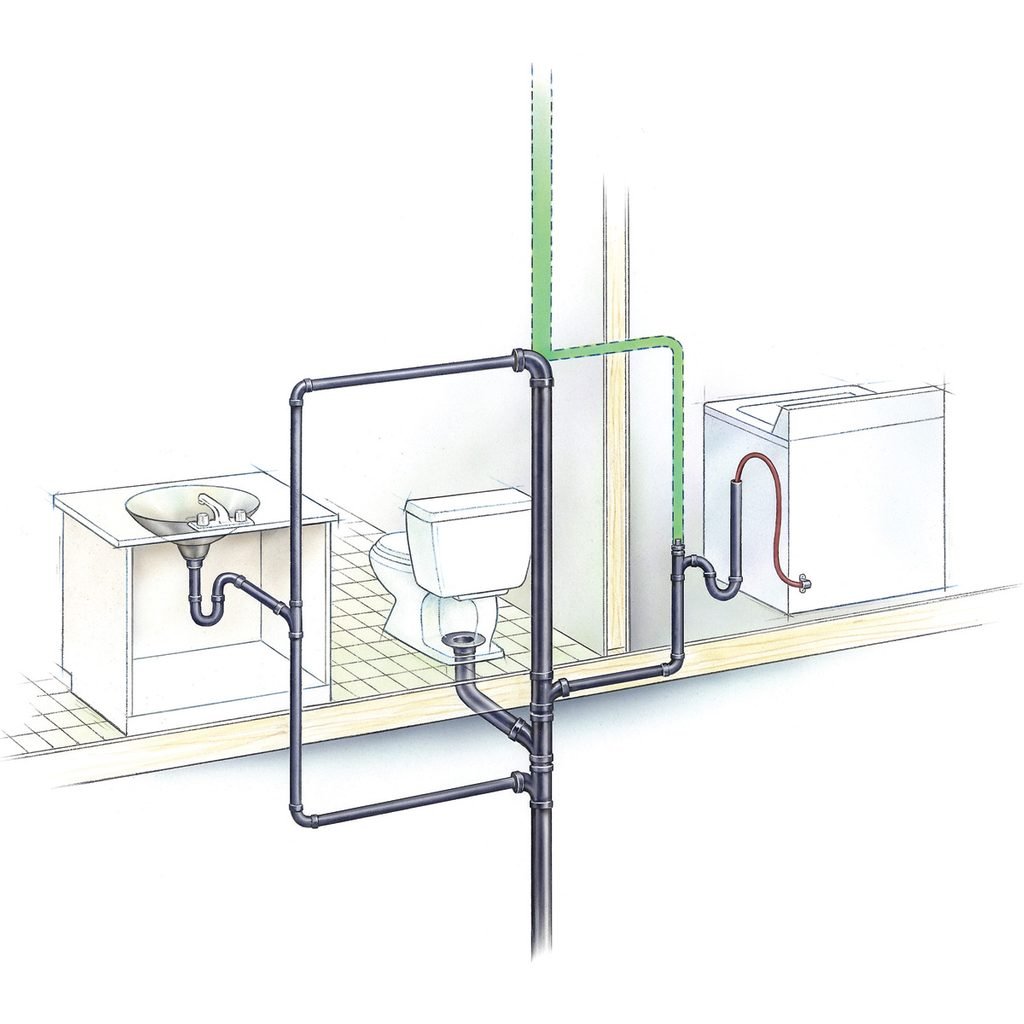Common Plumbing Vent Problems and How to Fix Them
Updated: Apr. 10, 2024

Solutions to a bubbling toilet or changes in the water level in the bowl.
The plumping system in your home needs a few things to work properly, namely water and air. While the first one is obviously, the second one might not be.
On This Page
How Drain Plumbing Works
In order for water to flow down a drain, the pipes need air to equalize the pressure in the drain line. That’s why all residential plumbing fixtures have to be vented.
Without the air from the vent, water will flow slowly or even backup. If the drain lines in your home have poor venting, water rushing down the drains will pull water from nearby P-traps, the “p” shaped device under the sink, shower, and tub that holds just enough water to create a seal, preventing sewer gas from backing up into your home.
The plumbing vent is typically located on your roof. There are usually several fixtures connected to a single drain pipe in order to minimize the number of vents poking out of the roof.
If your drain vent is clogged, one of the first places you’ll notice the problem is in the toilet.
Why is the Toilet Bubbling?
If you have air bubbles that rise up through your toilet bowl (except when it flushes) or notice the water level rising and falling, you may have a clogged or partially blocked vent. This toilet bubbling problem is especially true when you have an appliance like a clothes washer nearby. Your drain plumbing line is gasping for air.
The problem could also be a clogged toilet. If you suspect that’s the case, take steps to unclog the toilet.
Why is the Toilet Water Level Rising and Falling?
It’s usually the air vent that causes the water level to rise and fall. There could be other causes too, like a waste pipe that’s pitched incorrectly, which can make the water settle to a new level or there is a hairline crack in the porcelain in the trap that is causing a slow leak.
The drain in the toilet bowl is basically a P-trap. If the problem just started, it’s probably a blocked drain or plumbing vent pipe that needs to be “snaked” out. And since the water in the toilet is dropping and gurgling, it’s likely that the problem is near that area.
You may noticed drain problems elsewhere that could indicate a blocked vent, like if water’s not draining from a bathtub or sink. Rotten, sulfurous smells emanating from a drain could also be the telltale sign of a vent that’s not working. That could be sewer gas, and the methane leaking into your home can cause nausea or dizziness. dangerous when it’s leaking into your home like that.
How to Unclog a Plumbing Vent
Safely, climb onto the roof and locate your plumbing vent; it’s usually located above the bathroom. If the vent has a cap, you’ll need to remove it. Sometimes birds, mice or other critters can get stuck in there. Leaves and other debris can clog the pipe too.
Using a flashlight, look down the pipe and see if you can spot the blockage. It might be deep enough that you can’t see it. If the blockage is relatively shallow, you can try to remove the obstruction with a drain snake. After you’ve pulled it out, take a hose with an adjustable nozzle on the jet setting and blast out the remaining debris.
If you can’t see the blockage or reach it with a snake, you can just use the hose to try and clear it. Often times, that’s all you need. However, if the obstruction is accumulated debris or something really large, you may need to use an auger or even call a professional.
How to Unclog a Plumbing Vent Without Getting on the Roof
This a more difficult task, as it may involve removing and repairing pipes inside your home. Unless you’re experienced, it’s probably best to call a plumber if it’s not possible to unclog the vent pipe from the roof.